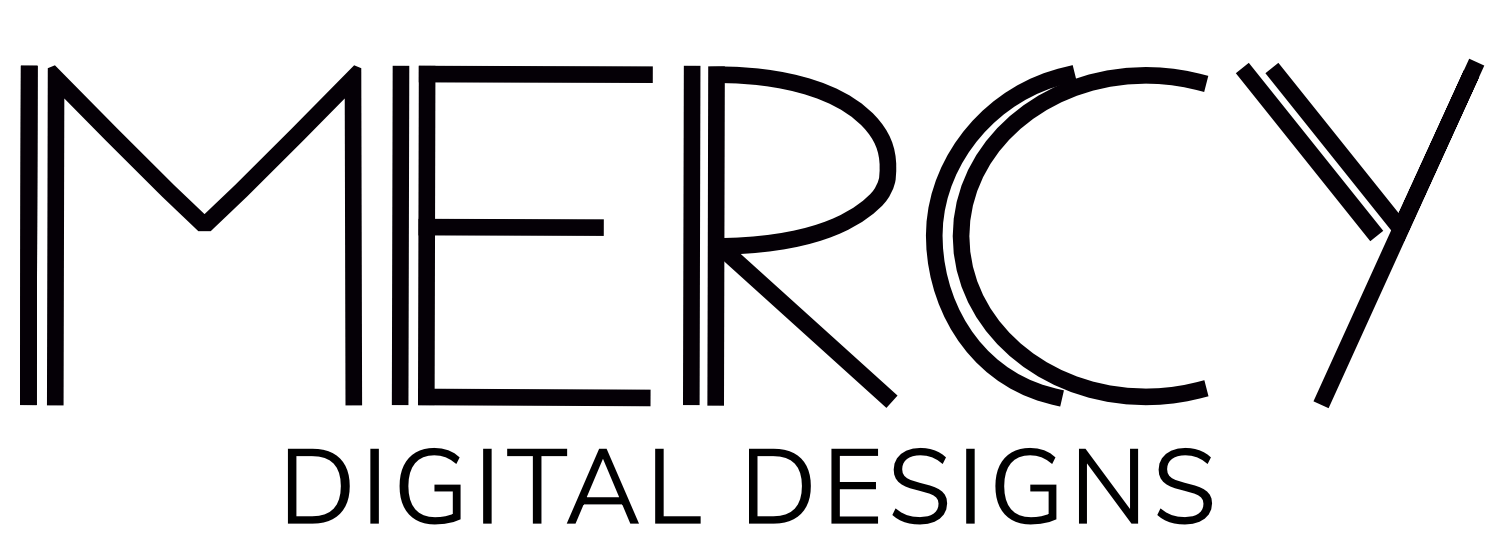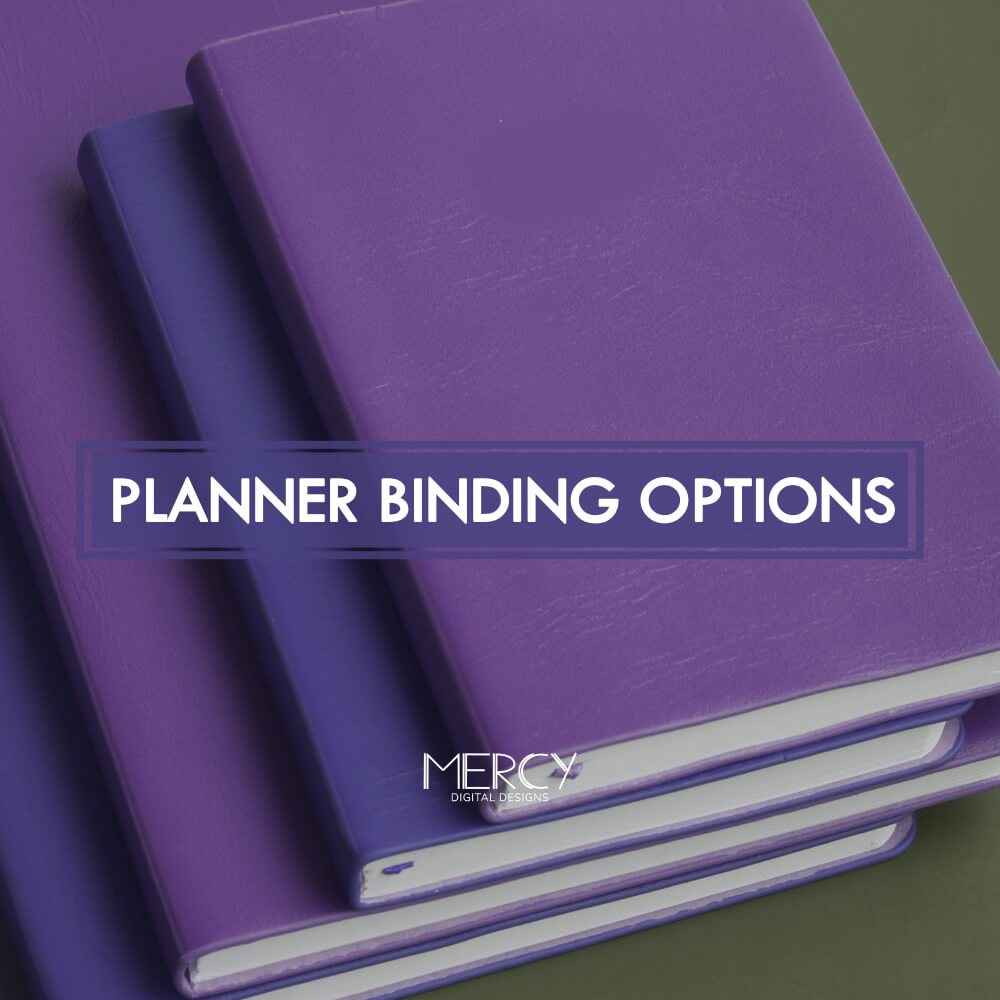We will explore the available possibilities of planner binding options. Whether you plan to get a printed planner or want to know how to bind your own planner. Which is the option I think is more flexible. So, some options to bind your planner are applicable for printed planners and others for printable planners or both of them.
Different Ways to Bind a Planner
There are a variety of ways to bind your planner, including spiral binding, ring binding, perfect binding, and disc binding. Each type of binding has its own set of pros and cons that you should consider when selecting which one is right for you.
Perfect Binding Planner
This type of binding, it’s the one used for textbooks and journals. The perfect binding planner has advantages like portability and great variations of paper quality and covers. Indeed, these can be softcover, hardcover and intermediate ones. Also, the book binding planner comes dated for 6 months of the year or the complete year. Starting with January or July.

On the other hand, there are printed planners with undated options, like this printed undated daily planner with softcover.
Another benefit of this binding planner option is if you choose a blank or dot grid notebook to make a planner, it’s the most used resource to create a bullet journal. Where you will fill the pages to your taste. Furthermore, the notebooks are an affordable option to buy.
Among the disadvantages of printed binding planners are that they are inflexible. You can’t add more pages if you used them all or want a personalized insert. Some of them can’t stay flat either.
Spiral binding planner
The spiral binding is another binding option. It uses a spiral made of wire or plastic to keep all the pages together. Usually, the planners that use this type of binding are the printed ones made by companies. But, you can make your own if you have printed all the planner pages you want. Then, take it to an office supply store where they can punch the planner and bind it. But, if you plan to use this method regularly, you could invest in a binding machine.
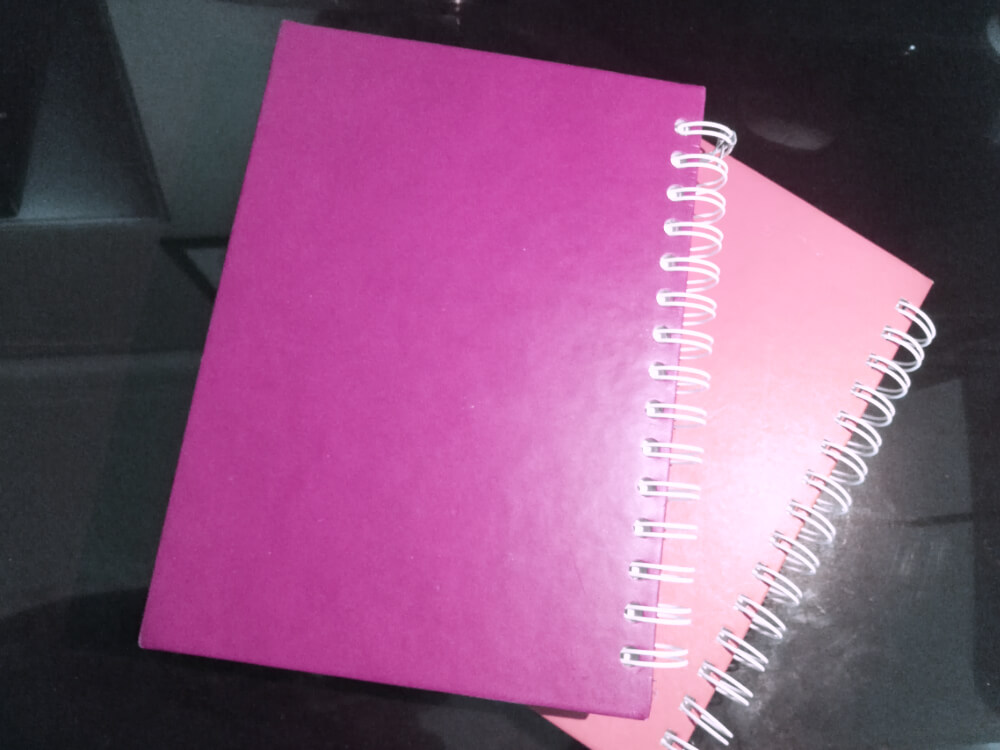
The benefits of this binding planner are they can be folded all the way through. Furthermore, come in many designs, sizes, dated or undated like the perfect binding planners. As well, they are compact enough to carry them with you.
On the contrary, spiral binding planners are inflexible, even if you make your own. In addition, it will be difficult to insert more pages because of the size of the spiral, that won’t accept more pages. And, if you buy a spiral printed planner and don’t have a machine, you won’t be able to add more pages.
Ring binding planner option
This is a binding system that consists of a folder with rings you can open and close to insert or remove sheets of paper. Like the other binding planner options, you can find printed planners with this type of system. With similar characteristics like a variety of colors, designs, sizes, dated, undated and so on. But, the difference with the ring binders is the highly customizable they are.
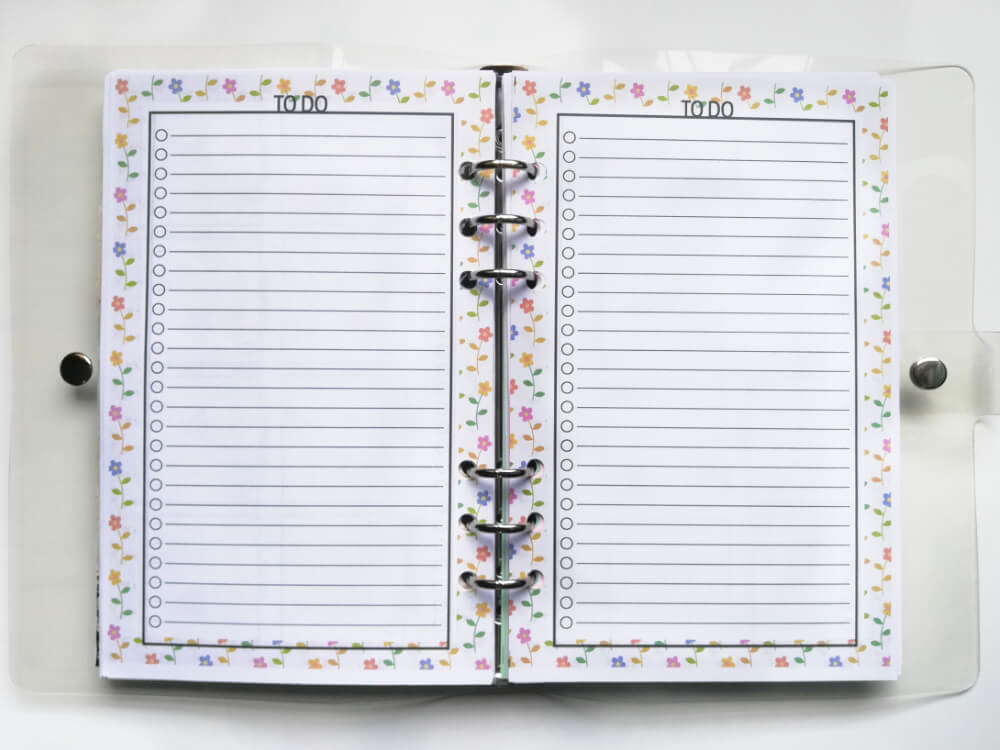
You can find the printed ring planner itself and find printed refills for it, depending on the size. Also, you can insert printable planners on it or make your own planner with this type of binding.
They are so flexible and easy to set up. Indeed, this is my personal favorite type of binding for my printable planners. There are binders with 2, 3 or 6 rings, for example. They come in many sizes, as I mentioned before, that can adjust to the type of planner you want to make.
So, here are the steps you would have to take, in case you want to make your own planner with printable planners.
Steps to make your own planner with ring binder
- To get a blank binder that suits your needs. I mean, a binder without paper refills or with blank sheets to print your printable planner on it, or make it yourself
- To print your printable planner pages or make your own
- Trim the pages if they have a small size,
- Punch them according to the binder you have (2, 3 or 6 holes)
- And insert the planner pages in the binder.
You can add, remove or change whatever page you want. Then, if you want to start trying with printable planners and inserting them in a ring binder, don’t forget to check out these black and white free printable planners.
At the same time, the ring binder has its disadvantages, like the binder can’t fold to one page. Also, they are not so comfortable to write on it, especially if they are small like A5, A6 or Personal. It’s better if we open the rings, remove the page, write on the page and insert again. And finally, if you want to get a binder in leather, it can be a bit expensive.
Disc binding planners
Disc binding planners are similar to the ring binders. It’s a type of binding where the pages are punched in a specific way, a mushroom shape instead of a common round hole, and they are inserted on a disc that functions like a ring binder. The main difference with the discs is that they are independent and aren’t fixed all together like the rings. So, with this planner binding option you can flip the page all over the ring, and it’s better for left-handed people.
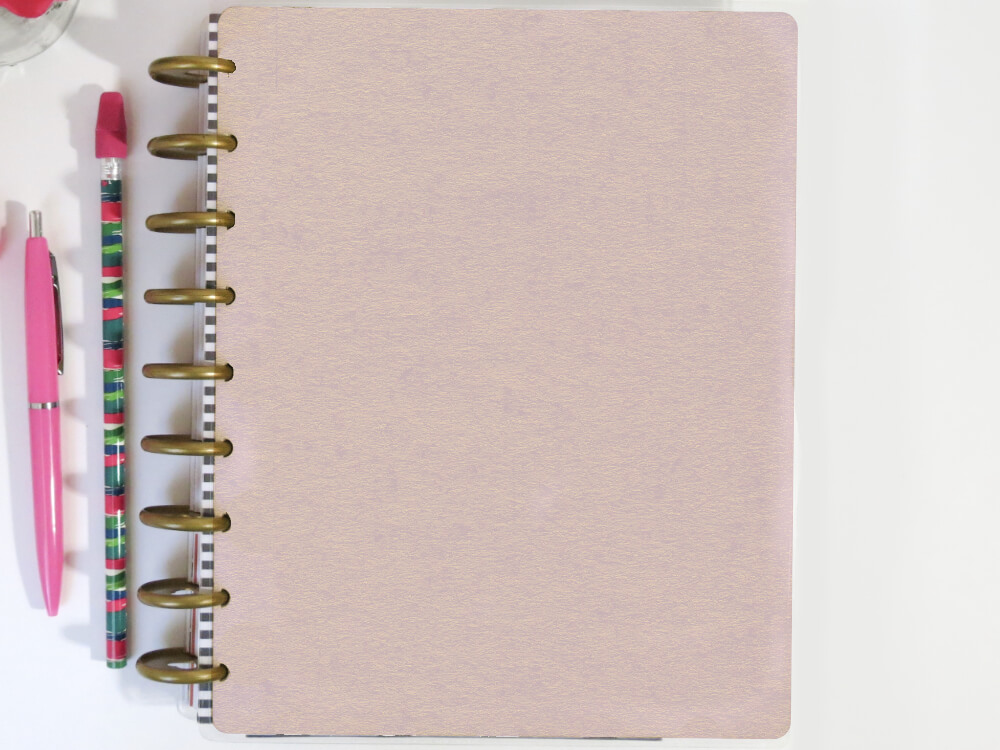
Like the other planner binding options, there are printed disc binding planners and parts of the disc bound planner sold separately. There are discs in various sizes and colors, disc bound hole punch and specific refills.
It has many advantages like the ring binders, and you can make your own planner with this type of binding, too. The disc bound planners are flexible, and you can add or remove pages at any moment. Also, they come in various sizes and designs.
But, because of the special shape of the hole and the discs, the punch can be more expensive than a regular hole punch, and less easy to find at stores. Additionally, if you print printable planners you would need a thicker paper (28lb to 32lb), because regular paper (20lb)is thin and doesn’t move easily on the discs. Finally, this planner can be a little bulkier because of the discs.
In summary, the printed planner has more binding options to choose from, while the better ones to make your own planner are the ring binders and disc bound planners.
I hope you have learned the basics of the main planner binding options available. If you have any doubt or tip, please, don’t forget to leave a comment.
